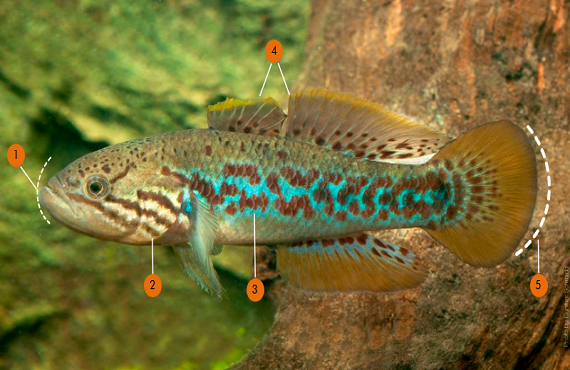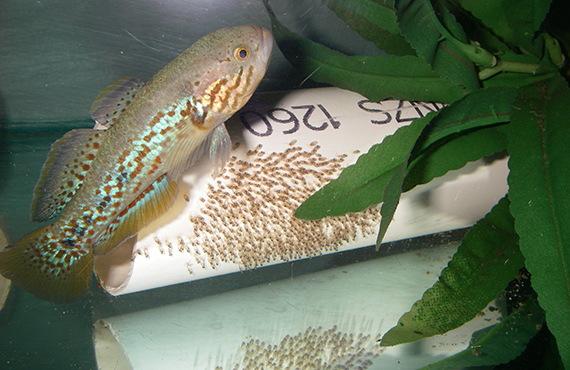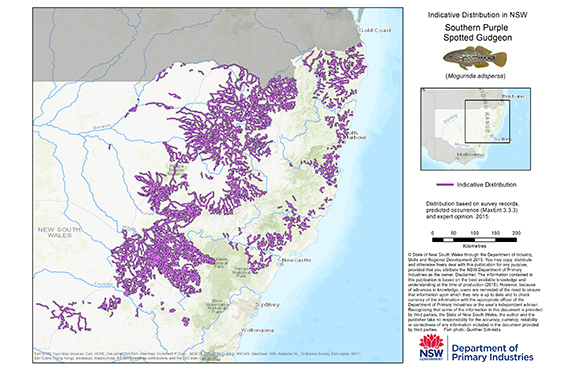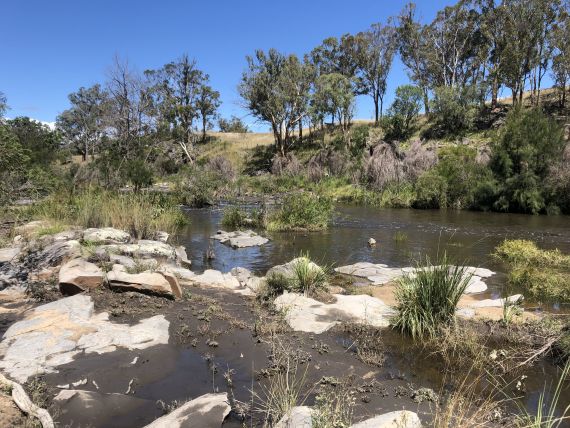
Southern Purple Spotted Gudgeon
Scientific name
Mogurnda adspersa
Status in NSW
Endangered.
Characteristics
The Southern Purple Spotted Gudgeon is distinguished by:
- Rounded head and a small mouth
- Three red-maroon bars on each cheek
- Red spots and a blue wash along the body, which brighten during breeding
- Two dorsal fins with yellow margins; the first being shorter and lower than the second
- Rounded tail
*Note that the fish are generally dark purplish-brown in colour, fading to light brown on the belly. During the breeding season, which generally spans from November to March, the fish display their bright colours which they are characteristically known for.
Size
They can grow to 15cm. Males reach maturity at about 4.5cm and females at about 5cm in length.
Distribution
The Southern Purple Spotted Gudgeon occurs in the Murray-Darling basin as well as parts of coastal northern NSW and Queensland.
The western population of the Southern Purple Spotted Gudgeon was previously widespread in the Murray, Murrumbidgee and Lachlan River systems and tributaries of the Darling, but has experienced a significant decline in recent times. They are now considered to be rare in inland NSW.
Habitat
The species can be found in a variety of habitats such as rivers, creeks, streams and billabongs with slow-flowing or still waters. Cover in the form of aquatic vegetation, overhanging vegetation from river banks, leaf litter, rocks or snags are important for the species.
Why is the Southern Purple Spotted Gudgeon threatened?
- Predation and competition with introduced fish such as Eastern Gambusia (Gambusia holbrooki) and Redfin Perch (Perca fluviatilis)
- Habitat disturbance by Common Carp (Cyprinus carpio)
- Fluctuations in water levels and flow due to river regulation
- Increased turbidity and damage of stream banks by livestock access
- Decreased water quality due to agricultural runoff and siltation
- Extreme weather events, such as drought and bushfires
- Local extinctions may not be naturally recolonised because of the species' inability to disperse the long distances required.

More information
- Current projects on Southern Purple Spotted Gudgeon
- Fisheries Scientific Committee determination (January 2008) (PDF, 35.29 KB)
- How to identify a Southern Purple Spotted Gudgeon
- Primefact: Southern Purple Spotted Gudgeon
- Priorities Action Statement - Actions for the Southern Purple Spotted Gudgeon






